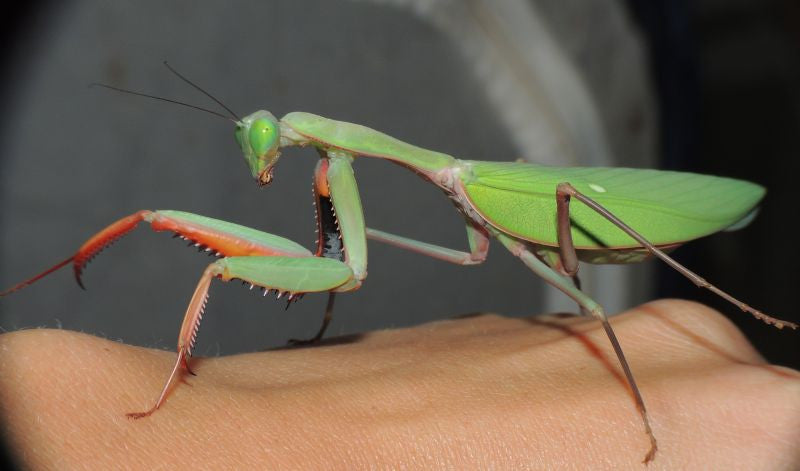





Hierodula majuscula - Giant Australian Rainforest mantis
$37.00 - $80.00
Giant Rainforest H.Majuscula, praying mantis are one of Australia’s largest praying mantids, growing up to around 70mm 3" - 4" in body length. They are found in the northern tropical regions of Australia, and feed upon large butterflies, dragonflies and a host of other invertebrate species.
Like other mantids this species lays its eggs encased within a foamy ootheca which sets hard soon after it is laid. The ootheca is usually attached to a branch or some other solid surface. The young hatch several months later, and begin feeding soon after emerging. They will tolerate each other for a short time, but once they disperse any chance meetings of the siblings will often result in one eating the other.
These mantids grow by shedding their outer skeleton (exoskeleton). This process is called ecdysis or molting. To molt successfully they need to hang uninterrupted beneath a leaf or branch. This can take 30 mins to half several hours. Maturity has been reached once the mantids have developed wings. Females can be identified as they get larger; males have 7 segments in the abdomen, and females
have 6.
One incredible part of the life cycle of this species is the mating ritual. More often than not the female will consume the male during mating, and amazingly he will continue mating long after she has consumed his head, front legs and thorax. Since at this point the male’s job is done, sacrificing himself for the sake of his offspring (his body providing nutrients to the female) is an advantage for the species.
Care guide Giant Rainforest Mantid, Hierodula majuscula Food: Live insects. Blue Bottle Flies (sold at most pet shops I dont use crickets.). Flies are best. Cockroaches are suitable, but do hide. Feeding once or twice a week is usually sufficient – provided enough food is given to keep the mantids abdomen filled and rounded. Freshly dead insects can be used but must be fed to the mantid via forceps or tweezers, as they will not pick up dead insects off the ground. Water: Mist spray around your mantis each day – it will drink the droplets. Enclosure: The enclosure needs to be large enough to allow your mantid to shed its exoskeleton properly. An enclosure should be higher than it is wide, as mantids like to climb upwards. Add branches or sticks to the enclosure to give the mantis something to climb on. Place the enclosure in a spot where it gets some daylight each day, but be careful it doesn’t over heat in direct sunlight. Make sure there is plenty of ventilation in your enclosure. Temperature/humidity: This species will do best at 24 – 30°C, but will tolerate 18 – 24 degrees and have a slower growth rate. Humidity needs to be relatively high 60-80%, achieved by mist spraying the enclosure daily. Life span: Around a year. Handling: These insects can be handled, but care must be taken when picking them up. Occasionally adults may attempt to grab your fingers mistaking them as food. They should be picked up gently, by coaxing them onto your hand. They always prefer to climb up, so use this to your advantage when picking them up and putting them back into their enclosure. Females tend to be more easily handled than males; males can fly and are a little more nervous. Reproduction: Adult males will mate with adult females all year round. Pairing them requires a large enough enclosure to allow the male to be introduced well away from the female so that he can make his own way towards her. Cramped conditions may lead to cannibalism before mating occurs. The female will produce an ootheca 20 – 40 days after mating. Unmated females may also produce an ootheca, but it will not hatch. Fertile oothecae hatch after 40 – 50 days, with usually 100 -200 nymphs emerging. The nymphs should be separated if they are to be raised, otherwise they will begin to eat each other relatively soon. Common issues: Occasional molting issues. This may be because there isn’t enough room in the enclosure for them to do so, or that their environment it too dry and their new exoskeleton hardens prematurely. Live food insects can also interrupt them during molting, so remove uneaten insects. NOTE: These animals are captive bred, and should not be released into the wild.
Many species of praying mantises live in tropical rainforests, including the giant rainforest mantis, also known as Hierodula majuscula or the Australian giant mantis.






